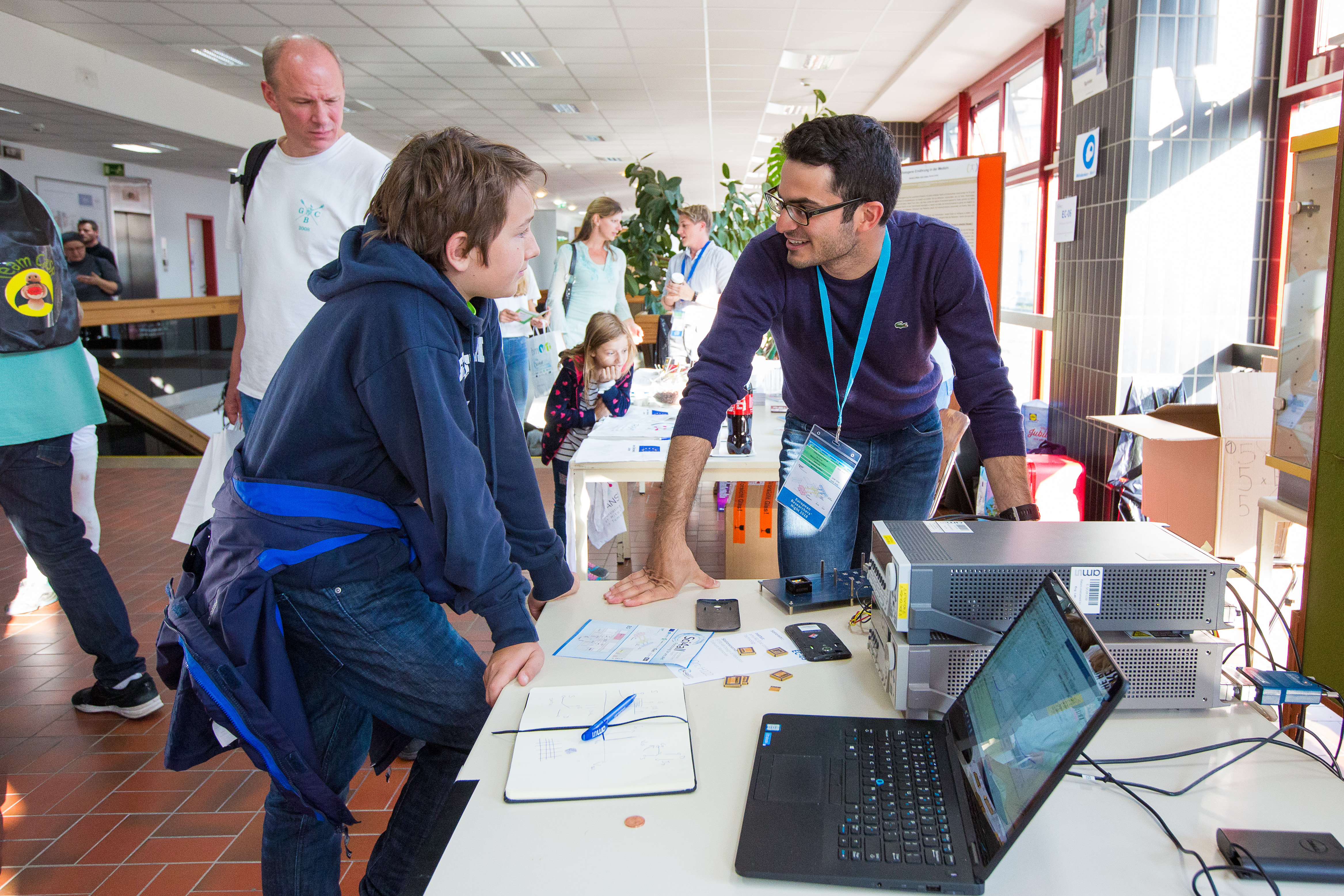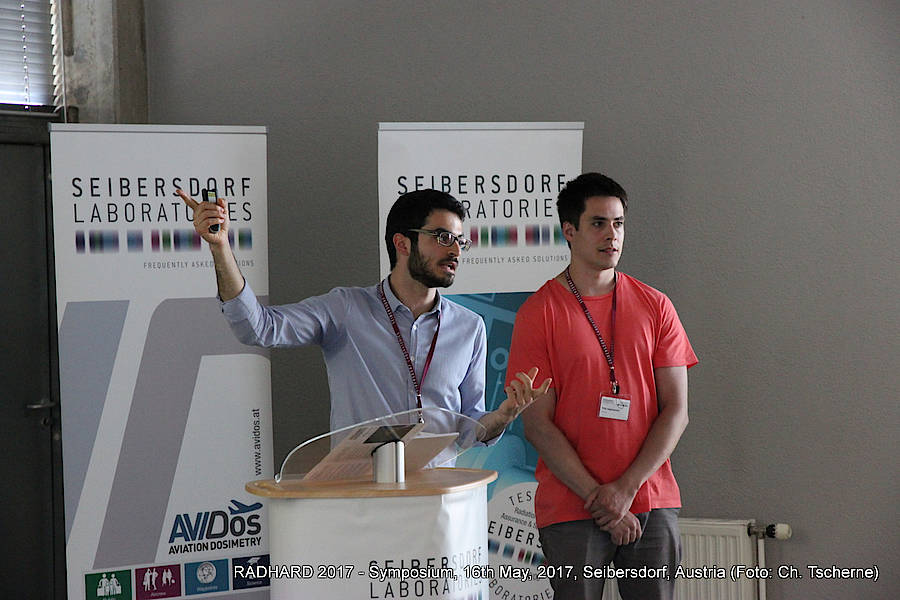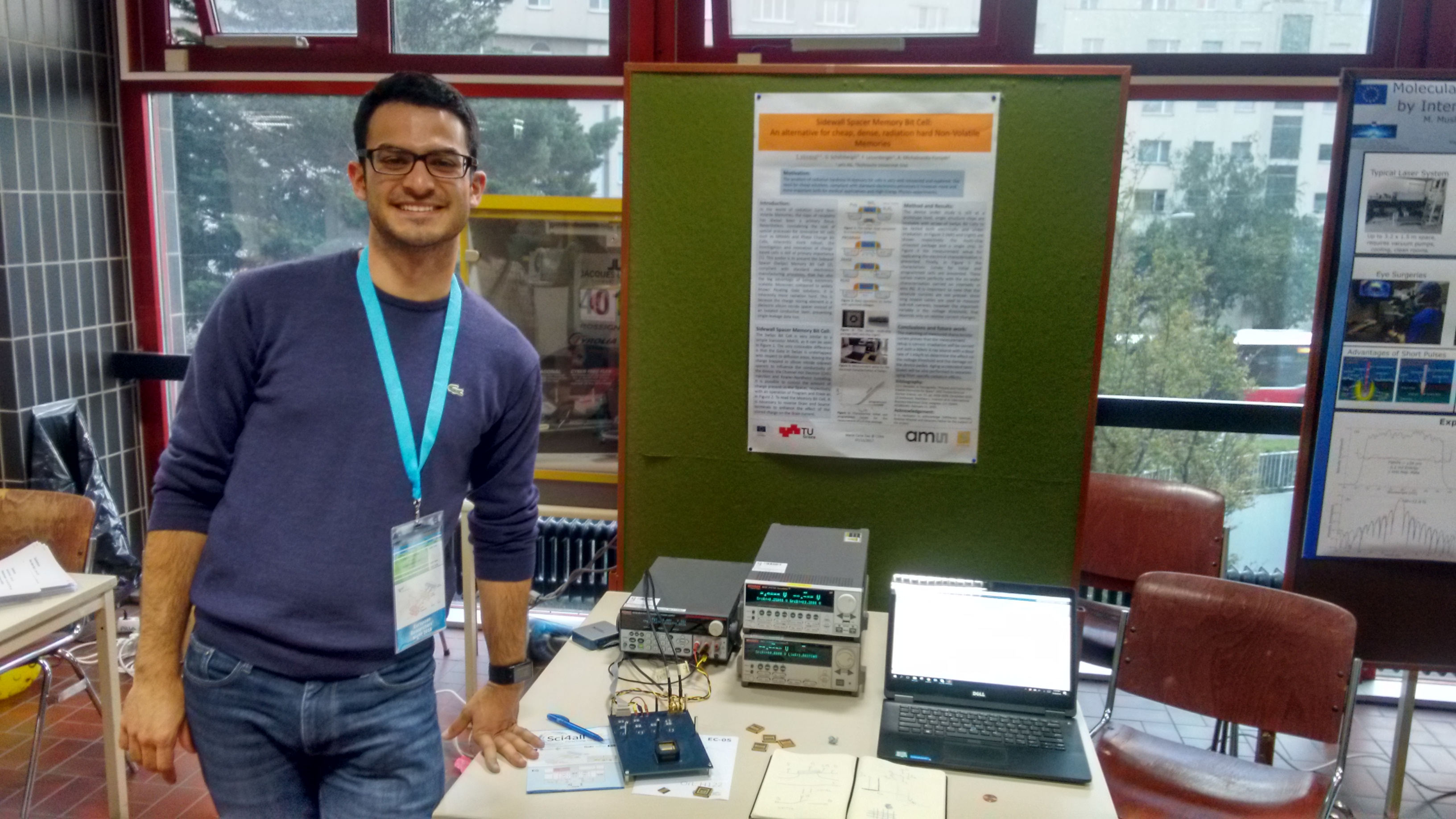
My interests are focused mainly in two areas: memory devices' physics and mixed-signal circuit design.
- Non Volatile Memories (NVM)
- Physics-derived models
- Radiation Tolerance
- Mixed-Signal Architectures (digital assisted analog design)





Tommaso Vincenzi received his MSc degree in Electronic Engineering in University of Ferrara with a thesis on mixed-signal design of near-threshold circuits for chip-to-chip communication. His interests range from ultra-low power transceivers to radiation damage in electronic circuits. Since 2016, he is part of the STREAM network as Early Stage Researcher in ams AG to investigate radiation tolerant design of non-volatile memories. He is also a doctoral candidate of the University of Technology in Graz.
I collaborate in the STREAM Work Package 3 Smart Sensor Design and Layout.
The scope of my work in STREAM is the development of standard circuitry with enhanced radiation hardness for medical applications in 180nm technology from ams AG. These types of circuit require high resistance to radiation, therefore the focus in test design is on X-ray irradiation. As Non-Volatile Memories (NVMs) are a core part in circuit architectures, they are the key point of this research. In particular, off-the-shelf components are dominated by Floating Gate Bit Cell based NVMs, especially sensitive to radiation due to their intrinsic structure. Starting from an existing patent, the objective of this research is the development of a full NVM concept based on a novel bit cell: the Sidewall Spacer (SwSpc) Bit Cell.
Total Ionizing Dose (TID) accelerated tests are performed in X-ray tubes, analyzing the oxide and nitride layers degradation to assess the weak points of the technology and gathering data for design improvement.
Moreover, high temperature accelerated tests are performed in parallel to separate different wear out effects. Thanks to these data, a compact model of the SwSpc Bit Cell will be developed, including TID effects. Circuit models are in fact crucial to reduce design time and, if properly validated, they provide a design verification tool. Commercial 350nm Floating Gate based EEPROMs from ams AG are taken as a direct reference.
Secondments
|
Host Institution and Secondment Topic |
Expected secondment period |
|
CERN (Geneva, CH), Irradiation of first stage prototypes |
2 weeks in October 2017 |
|
NSCore (Japan), Design & Testing of a full memory IP |
10 weks in February-April 2018 |
The impact of this research is central in the STREAM project, considering the parallel work on pixel sensors done at CERN. In fact, having standard radiation hard digital IPs would dramatically reduce the time to build fully integrated sensor solutions, thanks to the combination of the two research lines.
Moreover, having the opportunity to carry on this study in collaboration with industry and academia, having access to a wide range of trainings, being able to travel and build a professional network are a great opportunity for a PhD student.
I deeply value the challanges we have been offered in STREAM ITN. We indeed have the possibility of being proficient in technical research, having to manage my project in ams AG and interfacing the students of the Vienna Business School to learn about innovation management
What I expect to learn at the end of the ITN is to possess transversal skills, striving for independence and creativity.
